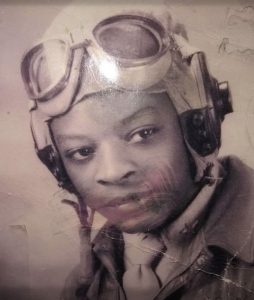After World War I – the “War To End All Wars” (if only…) – the United States military saw no reason to spend the money to maintain the airplanes or retain all of the pilots that served so valiantly in the skies over Europe. Besides, advancements in airplane design were coming so regularly that the airplanes used in that war quickly became obsolete.
The decision to stand down from military aviation preparedness came back to haunt the U.S. government in the mid-1930s when it became apparent that Nazi Germany, Italy and other nations were training thousands of young people to become pilots. These cadets were enrolled in civilian pilot training programs, but it was obvious they were actually training for the military.
In 1939, the USAAF only had 4,502 pilots, almost half of which were in the Reserves. Taking a page from other countries’ approach to aviation training, at the end of 1938 President Franklin D. Roosevelt announced the creation of a “trial program” of civilian pilot training under the CAA (Civil Aeronautics Authority) that would train 20,000 college students annually. In 1939, the program became known as the Civilian Pilot Training Program (CPTP). The program would be offered at select colleges and universities and the government would pay for a 72-hour ground school course and then up to 40 hours of flight instruction. From May 1939 until the attack on Pearl Harbor that marked America’s entry into World War II, 44 schools were selected to offer CPTP training. After Pearl Harbor, that number escalated until, at its peak, CPTP training was offered at 1,132 educational institutions and 1,460 flight schools.
In 1942, the CPTP became the War Training Service (WRS). From 1942 until 1944, when the CTPT/WRS program ended, students – including women – were trained to fly but they had to agree to join the military once their training was completed. Women joined the WASPs (Women Airforce Service Pilots) and served with distinction in the United States.
A few schools with black populations, including Howard and Virginia State Universities and Hampton and Tuskegee Institutes, were among those selected to include CPTP/WRS training in their curriculum. A flight school for blacks, The Coffey School of Aeronautics, was also selected to participate. Tuskegee was the first, coming on board in 1939.
Interestingly, Alfred “Chief” Anderson, who headed the military flight instruction program at Tuskegee, instructed CPTP students at Howard before he was recruited to come to Tuskegee. It’s hard to imagine what the Tuskegee military flight training program would have been like without his knowledge and passion.
From 1939 until 1944, 435,165 pilots were trained through the CPTP/WRS program. The program had an immediate impact on military aviation as well as local economies around schools that had the program and companies that built the trainer airplanes for the CPTP/WRS and the USAAF.
Hello, Pittsburgh
The P-51C Mustang named Tuskegee Airmen and the RISE ABOVE Traveling Exhibit will be participating in a 70th anniversary celebration of the Tuskegee Airmen at the Pittsburgh Fly Fest at the Allegheny County Airport in West Mifflin today through Sunday.
The CAF Red Tail Squadron is a volunteer-driven 501c3 non-profit organization that operates under the auspices of the Commemorative Air Force. For more information, please visit redtail.org.





